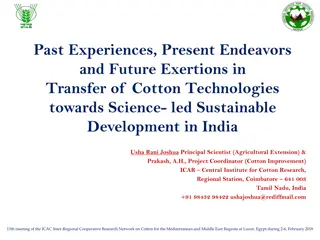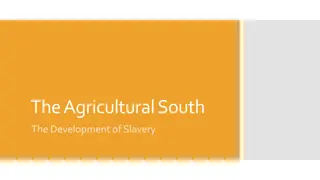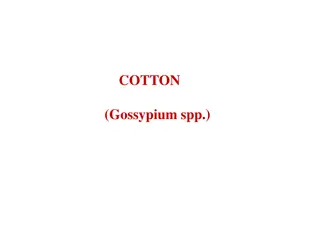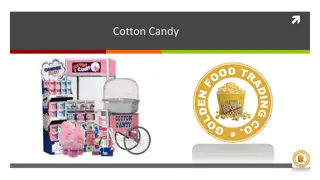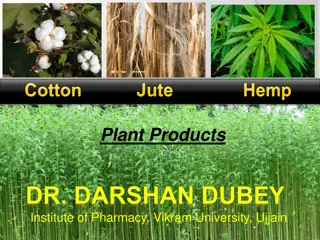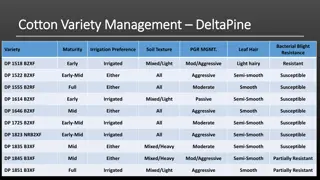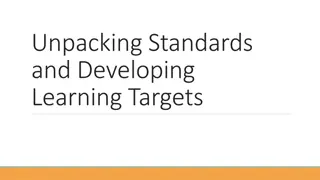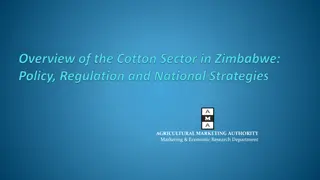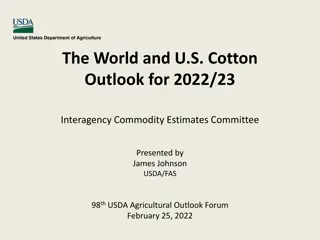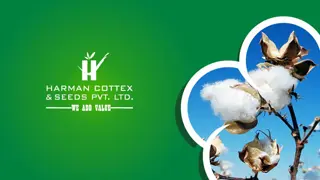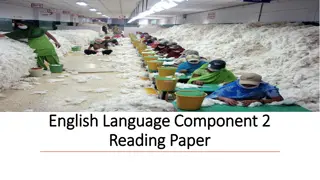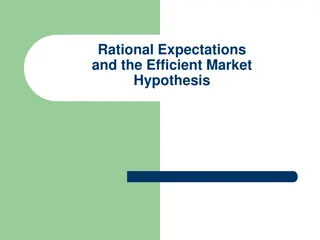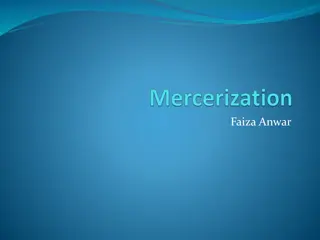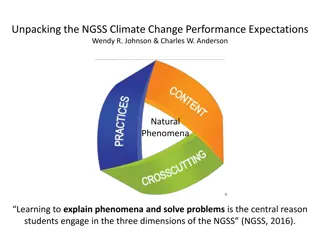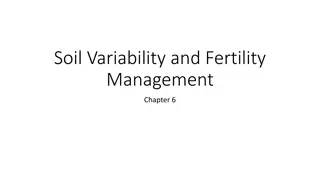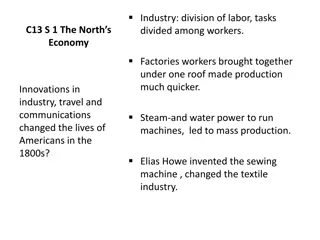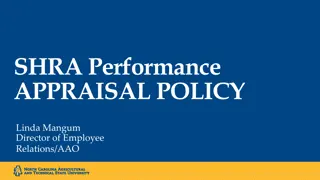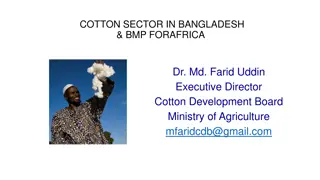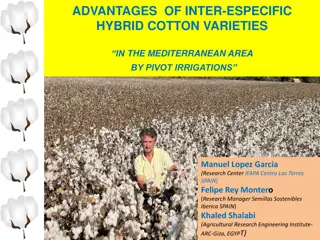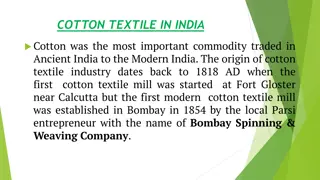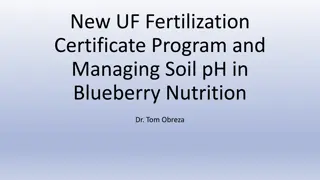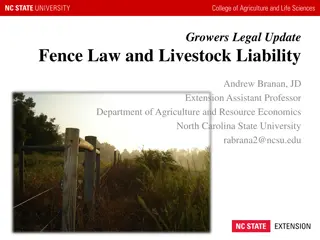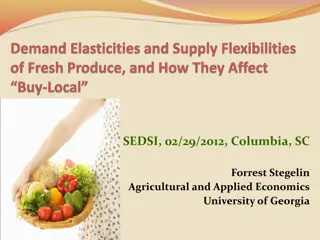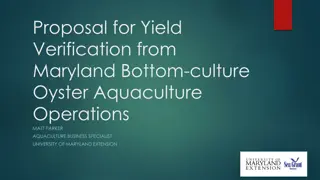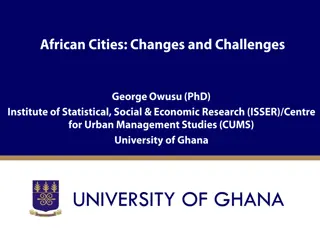Unpacking the Cotton Growers' Responsibilities, Challenges, and Expectations
In Zimbabwe, cotton cultivation by smallholder farmers plays a significant role in rural communities. The growers face challenges such as rising production costs, low productivity, and labor scarcity. They are responsible for complying with regulations, using inputs properly, and ensuring safety. The government's initiatives, like free input support programs, aim to revive cotton production. Private sector participation and technology adoption are essential for sustainability.
Download Presentation

Please find below an Image/Link to download the presentation.
The content on the website is provided AS IS for your information and personal use only. It may not be sold, licensed, or shared on other websites without obtaining consent from the author. Download presentation by click this link. If you encounter any issues during the download, it is possible that the publisher has removed the file from their server.
E N D
Presentation Transcript
UNPACKING THE COTTON GROWERS RESPONSIBILITIES,CHALLENGES AND EXPECTATIONS PRESENTER: JEREMIAH TEVERA Federation of Farmers Unions ( Federation of Farmers Unions (FoFU @ the XIV Meeting of the Southern and Eastern Cotton Forum ,Harare Zimbabwe 4thJuly 2018 FoFU) )
BACKGROUND Cotton, the second most important cash crop in Zimbabwe, is grown by thousands of smallholder farmers on average plot sizes of about one hectare in the summer rainfall growing season (November to April). Cotton is grown in four main regions of the country that are hot and receive rainfall of between 400mm and 600mm per annum. 1. The central and north- western part of the country in the Midlands province covering areas in Gokwe South and Gokwe North, where the bulk of cotton production takes place. 2. The northern part of the country in parts of the Mashonaland Central province around Muzarabani, Mahuwe, and Mushumbi. 3. The south-eastern part of the country in the lowveld in the Manicaland province and Masvingo provinces covering areas around Checheche, Mwenezi and Chiredzi. 4. Binga in the Zambezi Valley of the Matabeleland North province.
BACKGROUND CONTD Cotton is a major source of income for rural communities in these areas. The crop is usually grown under contract farming arrangements where contractors supply production inputs (seed, fertilizer and chemicals) to farmers on loan. At harvest, the contractor buys back the contracted seed cotton, deducts costs of the inputs and pays the contract farmer the remaining balance. However, in 2015 the government of Zimbabwe approved a three year free input support program to revive cotton production. However, in 2015 the government of Zimbabwe approved a three year free input support program to revive cotton production.
GROWER RESPONSIBILITIES Has to be registered with AMA; Must keep records; Must follow agronomic recommendations pertaining to Land preparation, planting, weeding, crop protection(periodic scouting); Comply with legislative provisions e.g removal and destruction of stalks; Use inputs for the purpose; Ensure safety (humans, plants, animals and environment) by proper storage and handling of chemicals No side marketing if contracted; Ensure full loan repayment;
CHALLENGES Cost of production has been on the rise(Inputs , Labour etc); Crop is labour intensive(Labour scarce and costly); Technology has not been speedily embraced and/or adopted locally in planting, picking/harvesting; Productivity has remained generally low 0.71mt/ha 2016/17 season average; Climate change leading to low/excessive rainfall; Inputs provision based on general recommendations NOT soil type,pH or Nutrition status of the soil; Depletion of draft power due to cattle deaths ,diseases and droughts esp. 2015/16 season; Government facility to revive cotton a good move but has to be weighed against provision of enabling environment for private sector participation(shouldn t crowd out private sector)
CHALLENGES CONTD Low producer prices farmer is a price taker; Family labour is taken for granted and not budgeted for-usually inadequate and exposes children to exploitation(Child Labour) and exploitation of women. Apart from being illegal , this brings inefficiency in the production system; Exposure to harmful chemicals detrimental to human health not covered in the budget. Awareness and educational sessions seldom held, need to escalate them
CHALLENGES CONTD Businesses operating in cotton growing regions usually manipulate prices of inputs and other products during marketing season to the disadvantage of producers/consumers-safeguards needed-Encourage investment by supporting Value Chain players-put enablers in place; Extension service provision should be complimentary (between Gvt and Pvt sector); General lag/lack of speedy adoption of Information Communication Technology
EXPECTATIONS To get better yields and prices than before (major); Adequate and reasonably priced inputs availed on time and closer to/@ farm-gate; Reduced time and cost of marketing produce; Private sector participation in cotton production funding; Prompt payments; Access to supplementary irrigation in case of dry spell; Effective weed, pest and disease management/control practices; Benefit from industry interventions by Government, rebates on duty, import bans via improved producer prices, employment creation and reduced input costs
EXPECTATIONS Improvements in farmer education and production system advancements in line with regional and global trends; Reserve Bank Export Incentive to capacitate local investment in the sector; Appropriate representation of farmers on government sector boards, commissions, authorities etc Escalation of consultation and cooperation between Government Ministries and Farmers Unions/Associations
DANKIE DANKIE



